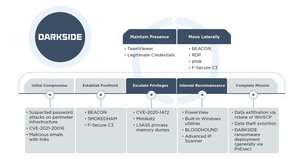
Colonial Pipeline, Darkside and Models
The Colonial Pipeline shutdown story is interesting in all sorts of ways, and I can't delve into all of it.I did want to talk about one small aspect, which is the way responders talk about Darkside.

The Colonial Pipeline shutdown story is interesting in all sorts of ways, and I can't delve into all of it.I did want to talk about one small aspect, which is the way responders talk about Darkside.

This week's threat model Thursday looks at an academic paper, Security Threat Modeling: Are Data Flow Diagrams Enough? by Laurens Sion and colleagues.
[no description provided]